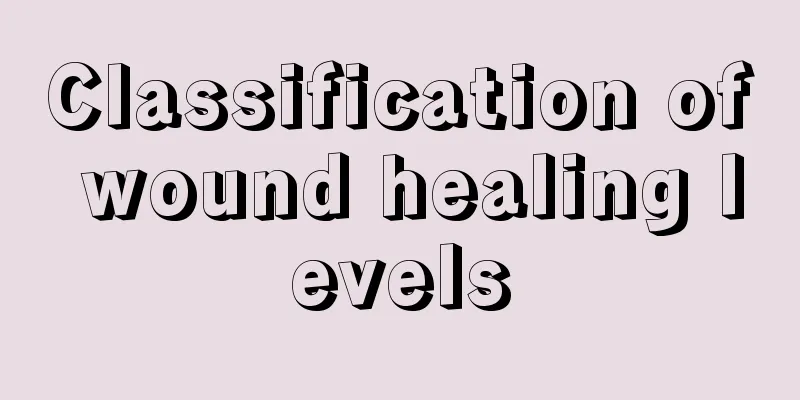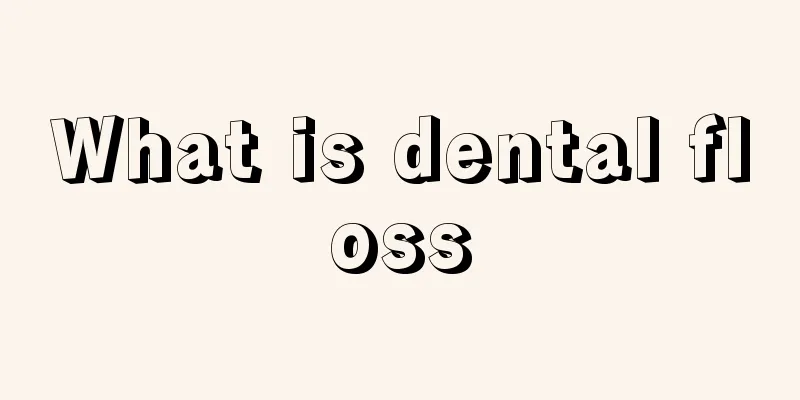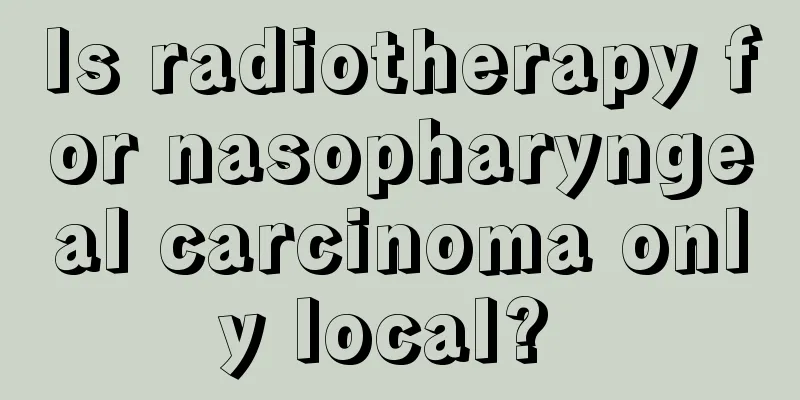Classification of wound healing levels

|
In daily life, we often use surgery to treat diseases. Surgery will involve incisions, and we must pay attention to the cleanliness of the incisions after surgery. In fact, the incisions are also divided into levels, namely level I, level II, and level III. Wound healing is also divided into grades A, B, and C. Next, we will discuss in detail the classification method of wound healing level after surgery. Incision classification and healing grade: 1. Clean incision, represented by "Ⅰ", refers to a non-traumatic, uninfected wound; the surgery does not enter the respiratory tract, digestive tract, urogenital tract and oropharynx. It refers to a sterile incision that is sutured, such as a subtotal thyroidectomy. 2. Potentially contaminated incisions, represented by "Ⅱ", refer to suture incisions that may be contaminated during surgery, such as subtotal gastrectomy. This includes areas of the skin that are difficult to sterilize thoroughly, wounds that have been debrided and sutured within 6 hours, and newly sutured incisions that have been reopened. 3. Contaminated incisions, represented by "Ⅲ", refer to incisions that are close to the infected area or tissues directly exposed to the infected substances, such as surgery for purulent appendicitis, surgery for intestinal obstruction and necrosis, and old traumatic wounds with local necrotic tissue. There are also three levels of healing: 1. Grade A healing, represented by "A", refers to initial healing with excellent healing and no adverse reactions. 2. Grade B healing, represented by "B", means that the healing is poor, and there is inflammatory reaction at the healing site, such as redness, swelling, nodules, hematoma, effusion, etc., but no suppuration. 3. Grade C healing, represented by "C", means that the incision is festering and requires incision and drainage. Recording method: If the healing is excellent after subtotal thyroidectomy, it will be recorded as "Ⅰ--甲"; if hematoma occurs at the incision after subtotal gastrectomy, it will be recorded as "Ⅱ--乙", and so on. Recording method: If the healing is excellent after subtotal thyroidectomy, it will be recorded as "Ⅰ-A"; if hematoma occurs at the incision after subtotal gastrectomy, it will be recorded as "Ⅱ-B", and so on. Common problems in defining the scope of surgical incision statistics: The statistics of wound healing are limited to incisions that are completely sutured in the early stage. Partially sutured incisions, wounds with sheet skin grafts, and incisions with drainage retained for more than 48 hours are not included in the statistics. For example, cervical polypectomy, nasal polypectomy, tonsillectomy, submucous nasal septum correction, chalazion curettage, various incision and drainage techniques, etc. are not included in the statistical scope. Some examinations and operations performed for the purpose of clear diagnosis and treatment, such as lumbar puncture, thoracentesis, abdominal puncture, splinting, skin traction, etc. are also not included in the statistical scope. |
<<: Yellow water flows from the buttocks_yellow water flows from the buttocks
Recommend
Will eating avocados cause poisoning in babies? What are the advantages and disadvantages of eating avocado for babies?
There is a widespread rumor among mothers that ba...
The incidence of esophageal cancer is caused by the following reasons
The incidence of esophageal cancer in oncology is...
Which hospital is the best for laryngeal cancer
Which hospital is the best for laryngeal cancer? ...
What is the difference between white sugar and brown sugar?
In fact, white sugar and brown sugar are both com...
Sweaty armpits and yellow clothes? Cleaning method is critical
In summer, people's bodies are prone to sweat...
What are the treatment principles for left ventricular hypertrophy
There are ventricles in the heart. Problems with ...
The difference between black wolfberry and red wolfberry
Wolfberry is a kind of traditional Chinese medici...
Causes of Neck and Back Pain
The human neck and back are connected together, s...
Which methods are most effective in treating liver cancer? The three most effective methods for treating liver cancer
(A) The “three magic weapons” treatment for liver...
What is the most effective way to treat early liver cancer? Introduction to early liver cancer treatment methods
What are the treatments for early-stage liver can...
What are the consequences of not treating breast cancer?
In severe cases, it can be life-threatening, so i...
Wash your hair correctly to make it feel fresh and clean immediately
If you have naturally oily hair, you can skip the...
How is the effect of TCM treatment for bile duct cancer
Since ancient times, traditional Chinese medicine...
What should I pay attention to after the blisters of chickenpox scab over
When the blisters of chickenpox scab over, many p...
What are the dangers of fever caused by lung cancer
What are the hazards of fever caused by lung canc...









